Ever wondered what goes into making a loudspeaker cabinet? Ian Ringstead visits specialist loudspeaker cabinet maker Timberworx.
I came across Timberworx by chance when I was reviewing a loudspeaker range last year. The designer happened to say he was visiting a company in Sheffield, where I happen live, to get some quotes on a new design he was working on. Instantly my interest was piqued and further investigation revealed that the company in question was Timberworx, and that it is now owned by the loudspeaker manufacturer Spendor.
Now Spendor is a blast from the past whom I fondly remember from my early initiation into audio in the 70’s. The company is now owned by Philip Swift an old friend of mine from my retailing days in the 80’s and 90’s when I used to sell Audiolab amps by the bucket load. When Philip bought Spendor out a few years ago I was pleasantly surprised and couldn’t wait to ask him about his new ventures.
Timberworx came about following the demise of Greaves, a long established cabinet maker in Sheffield harking back to the proud days of the cutlery trade which made Sheffield world famous. Greaves branched out in the 80’s into manufacturing turntable plinths and loudspeaker cabinets for the likes of Linn and then later B&W, Spendor, Meridian and many other classic audio companies. As the market has changed and evolved over the last thirty years or so, competition from abroad and aggressive marketing meant manufacturers had to be inventive and keep their eye on the ball. Greaves like many companies fell to the market foibles and idiosyncrasies of world trade and home trends.
Timberworx, like the phoenix, arose out of the ashes of the cabinet making trade in Sheffield and ex employees and their skills were employed to carry on the tradition, but needed to become relevant again in the modern business age. At one time there were many loudspeaker cabinet makers dotted all over the UK that companies could go to, but as times changed many went to the wall. Timberworx supplied a valuable niche in the market for companies wanting high quality cabinets that they would proud of and made to their exact specifications. Philip saw a great opportunity when the chance to acquire Timberworx came about a couple of years ago. He felt the addition of a specialist cabinet manufacturing facility would not only benefit his loudspeaker business, but be a bespoke manufacturer who could supply others in the audio industry.
Getting a product manufactured to your exact requirements is a lot harder than you might first imagine. After speaking to many of my friends in the business, it appears that getting consistent, high quality products is extremely difficult and can be very expensive. A lot of companies are simply not interested in low volume, bespoke work and even if they will supply goods, then the costs can be astronomical or not commercially viable. China of course will manufacturer at much lower costs if the quantities are large enough, but bespoke or low volume work is usually a non-starter.
I applaud Philip for wanting to share his company’s expertise and flexibility with the rest of the Audio community. His passion for the business and the many friends he has, like mine from the last forty years, is testament to the spirit of Hifi business. The audio business in the UK is tiny compared to most consumer electrical markets and is driven by the passion enthusiasts have had over the last eighty years or so. Most businesses started from very humble origins and ideas; to either become large brands sold all over the world, or remain bespoke companies dedicated to their roots and beliefs.
The Timberworx factory is based on a typical industrial estate in East Sheffield and is a relatively small unit in comparison to some I have visited. Philip started the tour with the “goods in area” where all the raw materials are initially delivered and stored. Needless to say there were large piles of timber, mdf and veneers ready to be used as and when required. I was then taken through the initial processes of the raw materials being prepared, selected and graded. High tech machines were in abundance as one would expect, which aid the manufacturing process greatly, but human touch and skill was evident everywhere. Philip explained that the different grades of mdf they used were very important, as consistency and durability are key to good and consistent end results. Chipboard has been a popular material in the past, but modern designs use mdf for its superb machining qualities and consistent results. Birch ply is an option that some manufactures have used and indeed some still prefer, but as Philip explained to me, even using the best quality Finnish birch ply is costly and, when used in the aircraft industry, each piece has to be x-rayed to check for air pockets.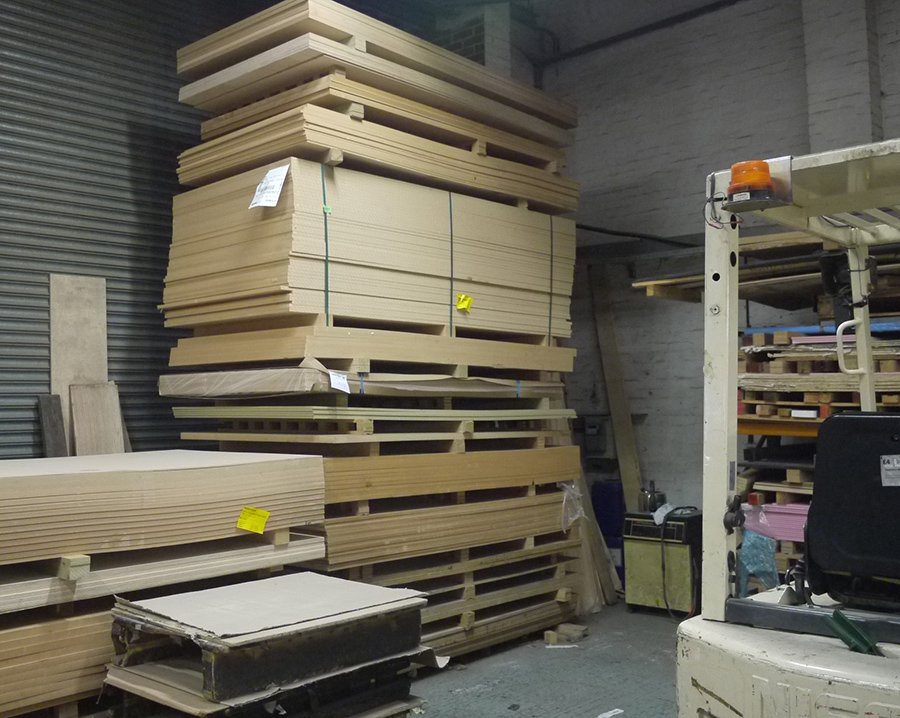
Veneers of many different types can be supplied and I watched the process of a side panel being passed through a machine to apply the glue and then the operator placed the veneer of choice on to it and it was then placed in an industrial press and several tons of pressure applied. This ensured a perfect fit and finish as no one wants the veneer to lift or bubble later. Several machines that were computer numerically controlled (CNC) were being used to cut out the many different shapes and sizes required on large vacuum tables to hold the materials in place.
Once the cabinets had been cut out, veneered and glued together, they went through the many finishing processes involved. One that particularly caught my attention was the belt sander. A large continuous roll of sandpaper is placed on a machine and then the operator very carefully and skilfully places a paddle on top of the rotating sand paper and smoothes the wooden surface of the cabinet to a perfect finish. I was told this is all done by touch and only achievable through experience; one false move or loss of concentration and a cabinet can be ruined.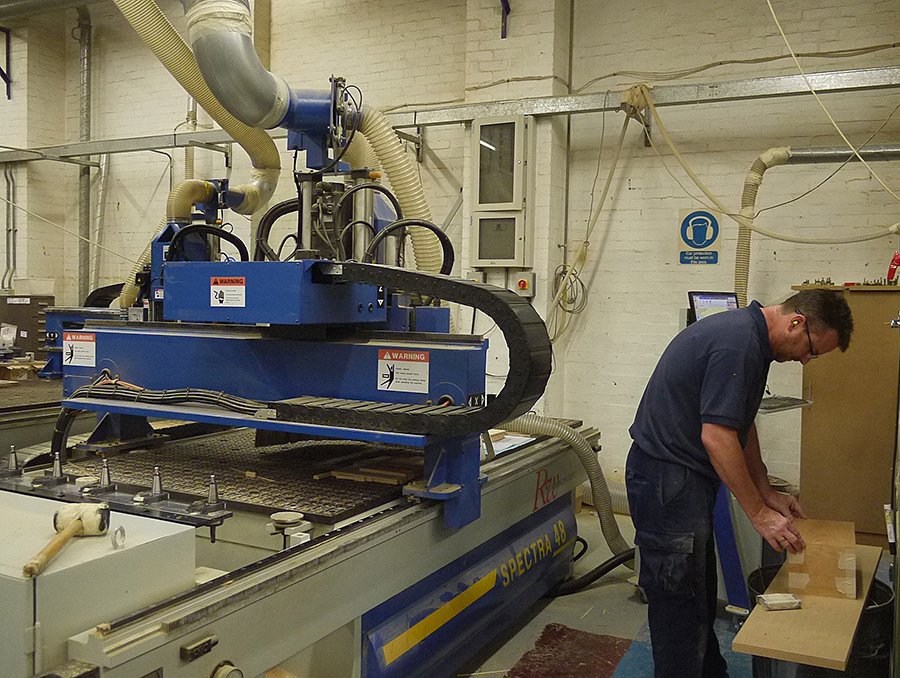
Other areas of the facility had several people assembling cabinets ready for their paint finish to be applied. Again human touch came to the fore as Timberworx believe that feel and touch are far better than the human eye at determining the end result. Upstairs in the factory there were spray booths to apply the special paint or high quality piano lacquer/ high gloss finishes. Also speaker grilles were being meticulously made by hand from the fully machined frames that were then carefully covered in the fabric cloth and makers badges applied. The work force seemed fully engaged and are encouraged to make suggestions and improvements to the manufacturing process wherever it is appropriate.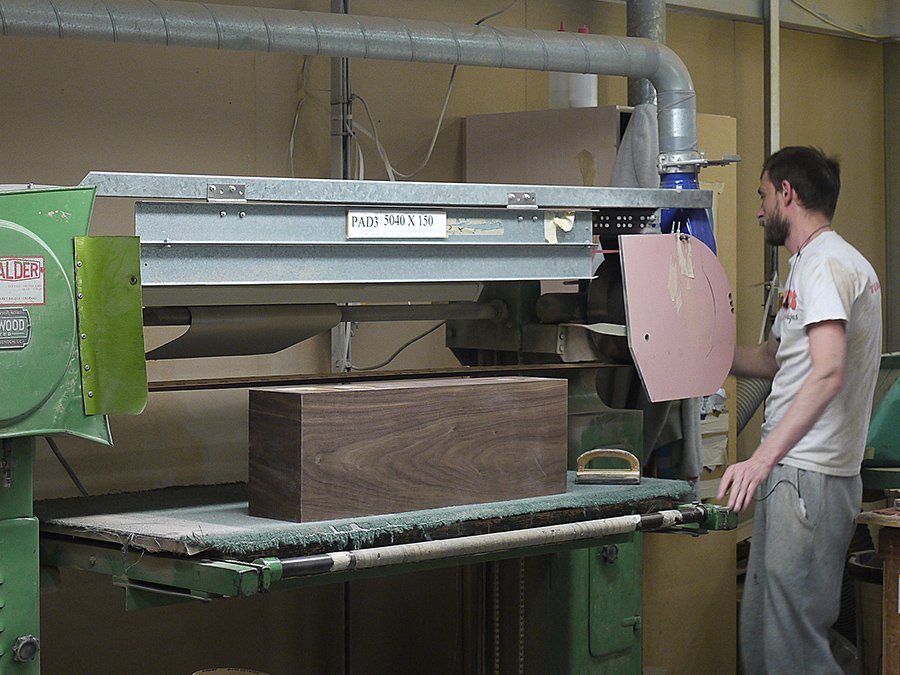
Once the cabinets or products have been finished they have a final inspection before being packaged and sent off to the companies for them to finish their assembly.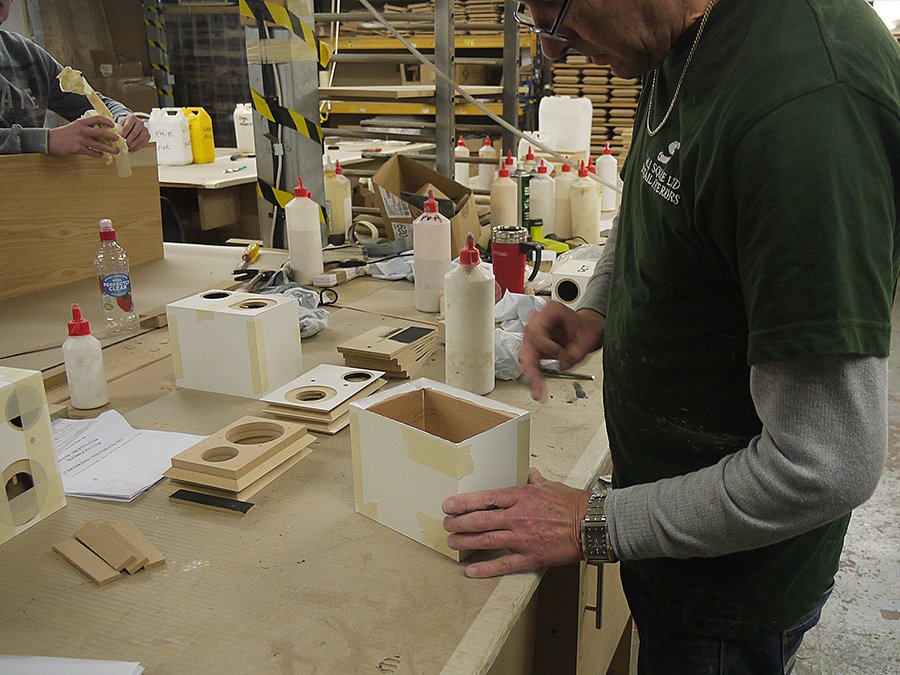
Looking at Timberworx you would assume that what they do is the norm, but believe me it isn’t. Any specialist company has to work very hard to keep ahead of the game and provide exceptional service. You cannot rest on your laurels.
Ian Ringstead
























































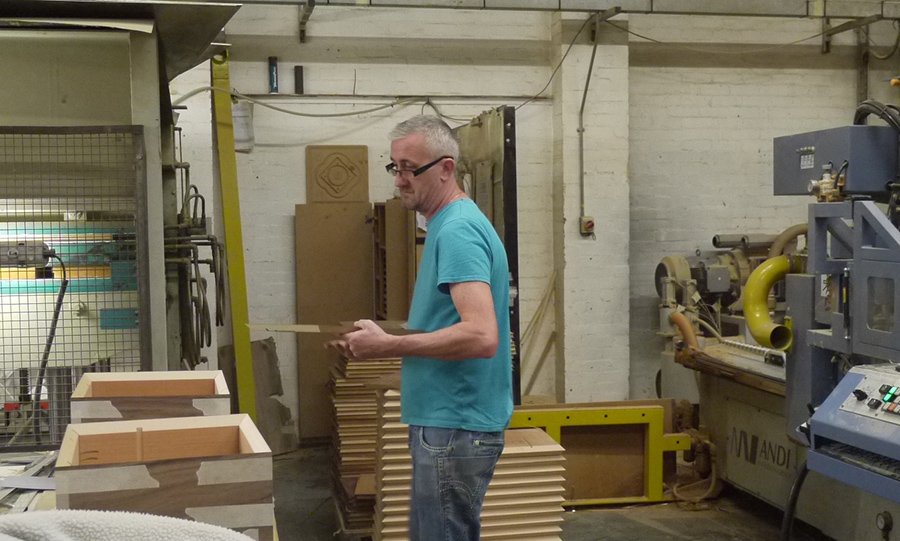
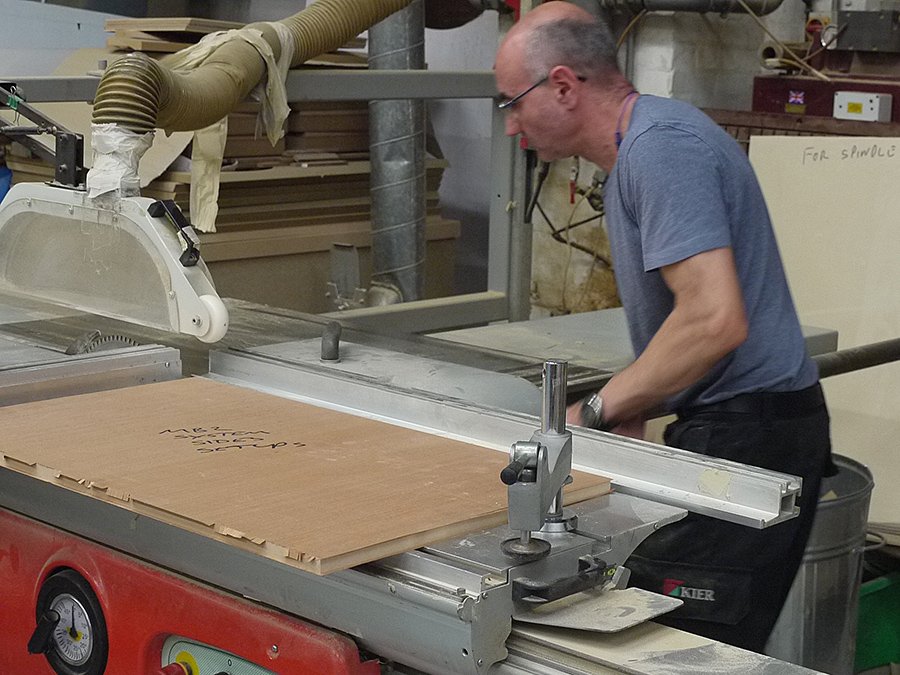
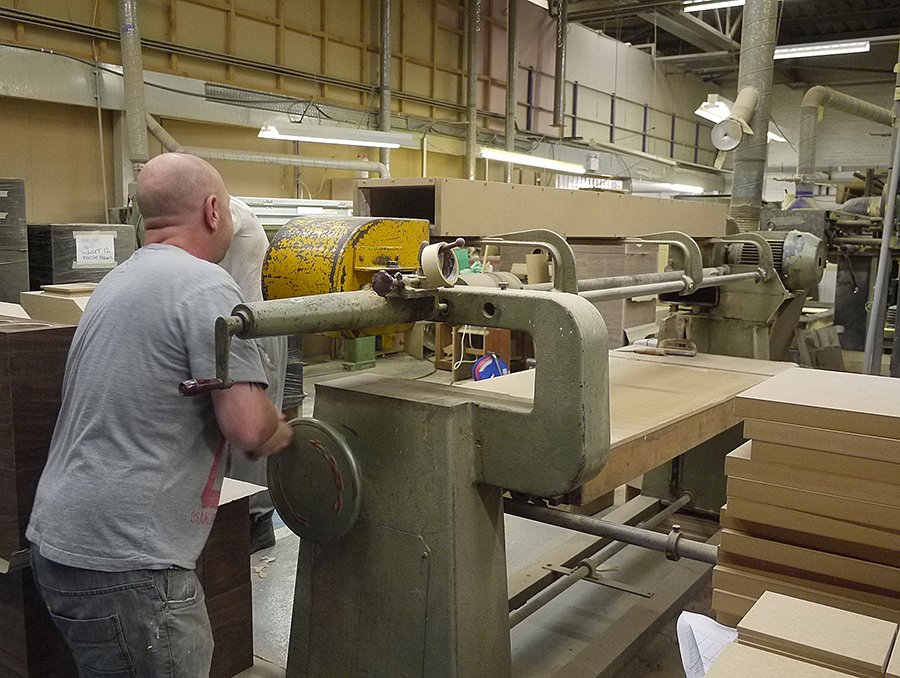
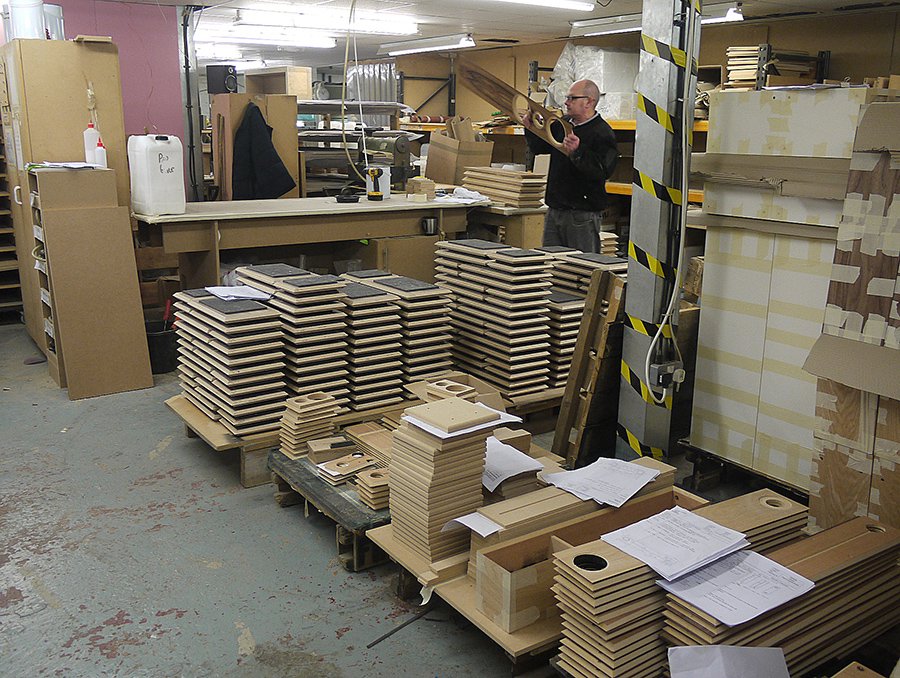




























































































































































You must be logged in to leave a reply.